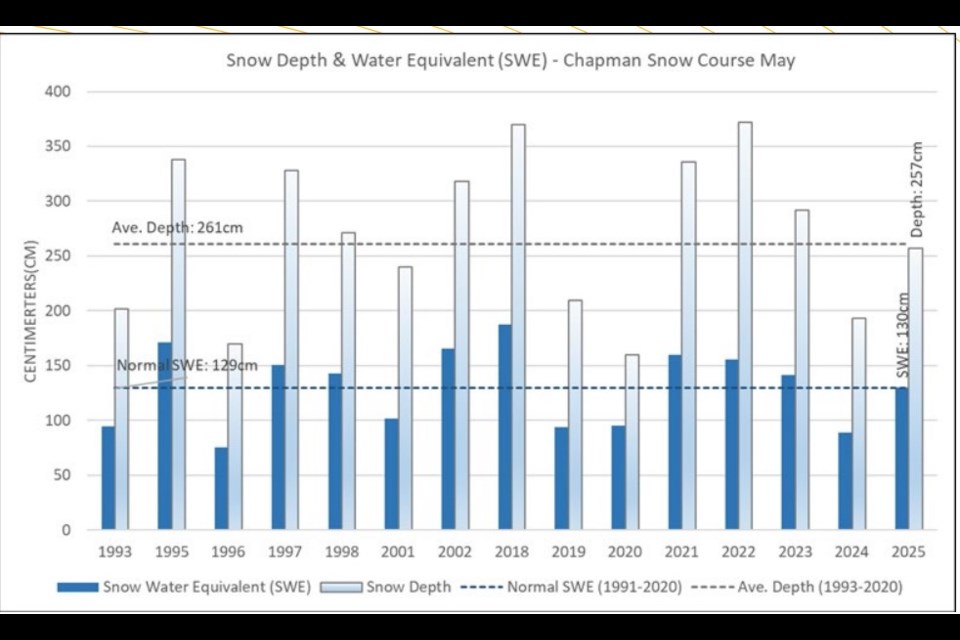The May 8 Sunshine Coast Regional District (SCRD) committee of the whole meeting kicked off with the much-anticipated first 2025 water supply update.
Annually, from the start to the end of regional water conservation measures, these monthly capsulations of data, analyses and photographs on the current state and outlook for regional water supplies have been an agenda “watch point” for water customers. They have also made the region’s manager of infrastructure, Remko Rosenboom, one of the more publicly recognizable faces among SCRD staffers.
The 2025 update launch began with April snowpack data from Chapman and Edwards Lakes that showed both marginally under average range for depth and water content but above 2024 levels.
Rosenboom noted that current snowpack levels in the areas that the Chapman Water System depends on are “not alarming at this time, different from elsewhere in the province." He referenced that latest snowpack surveys from the B.C. River Forecast Centre, (released April 9), which showed the province’s overall snowpack at 79 per cent of normal. That report detailed that in April 2024, the provincial snowpack averaged 63 per cent of normal, which was the lowest recorded in 50 years. Three areas in the province were show with snowpacks at 50 per cent or less of their average.
He also noted that the outlet at Chapman Lake was open and ice-free.
Why and how are local snow surveys done?
Speaking with Coast Reporter, Rosenboom explained the SCRD and other regional water purveyors undertake water surveys for data to help manage their resources and to provide the province with information.
The work locally is conducted by three regional staff members, who fly by helicopter into sites at the lakes that have been set up to facilitate the standard tests on snow depth and water content the province asks for, said Rosenboom. Those efforts can take between a half day to two days, depending on weather and ground conditions, he noted. The costs for the work is bourne by the SCRD without a contribution from the province.
But why do snowpack measurements matter for the SCRD’s rain-dependent Chapman water system?
For board chair Alton Toth, the information gathered “not only gives us a general idea of what the start of the season, up to Stage 2 (conservation measures) will look like, it lets us see trends when they exist and get an idea about what our snow situation is doing over the course of years and climate change."
“It also helps for flow analysis and forecasting vital information to have from a research perspective as well as an operational perspective,” according to Rosenboom.
Snowpack measurement is one phase of what has become a wide-ranging water supply and use data assembly for the regional district. That information has led to ever more comprehensive water update reports.
“Five-six years ago, we were in the early stages of actually understanding our water system and what could trigger certain stages and events. We are now at an operational level, way better at understanding of the responses and potential changes to our system.”
As an example of how water data collection is helping, he said, “In 2022, it was a very intense fall but during that period we learned so much about how our water system worked and the data we collected during that time was valuable to doing event analysis… we are able to establish connections in terms of data and information and that is helping us all along in decision-making and forecasting.”



